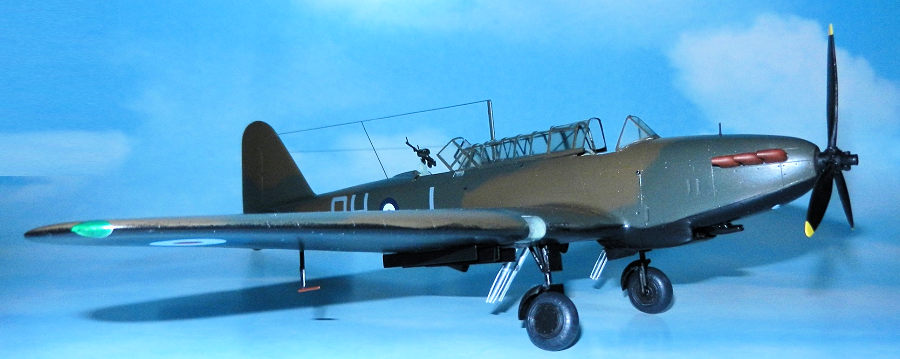
Classic Airframes 1/48 Fairey Battle
| KIT #: | 429 |
| PRICE: | CAD$40.00 |
| DECALS: | One option |
| REVIEWER: | Pablo Calcaterra |
| NOTES: | A lot of additional work added |

| HISTORY |
Though it has been considered one of the worst planes of WWII truth is that the Fairey Battle was a victim of the fast progress and developments of the aviation industry of the 1930s. Conceived as a STRATEGIC bomber to bomb France (no range to reach Germany) it was at the time faster than the fighters in service in the RAF. Not only that but it was the first plane with a Merlin engine.
As exercises and developments in aviation started to show, the Battles were not going to succeed as strategic bombers and other planes like the Wellington started to show their potential.
That being said when war broke they were rushed to France…as strategic bombers. But because they were restricted and not allowed to bomb cities they were not able to fulfill their role. Not that it mattered anyways because their bases in France were pretty far away from really important targets.
The RAF knew and had put together a list of potential improvements to be implemented. These included better forward armament, better protection for the engine and fuel tanks among others…and those would have come at the cost of the 3rd crew member and the useless night bombing equipment, etc. These changes had been discussed but never implemented because…why waste money on an obsolete design (instead of giving the crews a fighting chance)?. Anyways the 3rd crew member was needed because it was a strategic bomber (?!) and those modifications would have been useful for a tactical role.
These changes could have given the plane more chances to survive in a hostile environment and were not that hard to implement. But the conservative mentality of the RAF “leadership” stopped those measures because some higher ups were determined to show that the plane was a failure as they had predicted. And by doing this they condemned their valiant crews to their death.
Moreover when the Phoney War ended the Battles were thrown into the battle as tactical bombers, flying at low altitude and with no armour…a role for which the plane had not been developed and that cost the RAF dearly.
88 Squadron and Dudley Honor:
 Dudley Sandry Garton
Honor was born in Quilmes, Buenos Aires Province (just a few kilometers away
from the City of Buenos Aires), Argentina on September 5 1913. As his name
clearly shows his parents were British. He was educated in Quilmes and his
Spanish not surprisingly was better than his English (like Ian Nana Adamson who
flew in 136 Sqn in the Far East). When he was 23 years old he joined the RAF on
a short service commission. His initial training took place at 8 E&RFTS Woodley.
On September 5th
1937 he became an Acting Pilot Officer on probation. On September 18th
he was posted to 6 FTS Netheravon and then joined 88 Sqn at Boscombe Down on
March 7th
1938. On July 12th
he became a Pilot Officer.
Dudley Sandry Garton
Honor was born in Quilmes, Buenos Aires Province (just a few kilometers away
from the City of Buenos Aires), Argentina on September 5 1913. As his name
clearly shows his parents were British. He was educated in Quilmes and his
Spanish not surprisingly was better than his English (like Ian Nana Adamson who
flew in 136 Sqn in the Far East). When he was 23 years old he joined the RAF on
a short service commission. His initial training took place at 8 E&RFTS Woodley.
On September 5th
1937 he became an Acting Pilot Officer on probation. On September 18th
he was posted to 6 FTS Netheravon and then joined 88 Sqn at Boscombe Down on
March 7th
1938. On July 12th
he became a Pilot Officer.
When the war in Europe broke 88 Sqn moved to France as one of the AASF Squadrons. Led by Sqn Ldr. Dickens 16 Battles flew into Mourmelon-Le-Grand on September 12th. Commanding Officer was Wing Commander Riversdale-Elliot DSO with A Flight being led Flt Lt Madge and B Flight by FO Baker. Pilots were 12 officers and 4 sergeants. Honor was part of A Flight and was in charge of Sports and Airmen Messing. On September 18th both A and B Flights sent planes to the German border but had to return due to unfavourable weather conditions. Sept 20 first combat losses happened when FO Baker led a section of 3 B flight planes on a recco mission during the morning. At 11.47 am the formation was attacked by 3 Bf109Ds of JG152 in “vic” formation over Achen. Trying to evade the attacks by turning the plane flown by F/Sgt Page was shot down in flames thus becoming the first 88 Sqn loss of the war. F/O Baker dove while turning and lost sight of his No2 (F/O Graveley). He had crash landed and got severely burnt. He returned to the plane to rescue his crew: one had received a bullet thru his head and the other one he dragged out of the plane but succumbed to his injuries after suffering an amputation in hospital. The air combat lasted 2 to 3 minutes. At the time it was believed that the gunner in Baker’s plane (Sgt Letchford) had shot down the first German plane of the war in flames. It is now known that no 109 was shot down and that most likely what the gunner saw was No 2 or No3 coming down in flames. On September 24th the first entry of Honor’s activities in France after the outbreak of the war shows him flying with his crew of Sgt. Steele as observer in Battle K9349 “J” as part of a 3 plane formation but no enemy was encountered this being training flight. Shortly afterwards on the same day he took part in another training mission when, along 2 other more Battles, he played the role of an attacking enemy fighter. On September 26th his first combat mission took place when in a different plane he was part of a 6 plane formation that did a photo and visual recco to map Saabrucken. No enemies were encountered. The next entry on the 88 Sqn records show Honor with his crew of Flt Lt Baker as Observer and AC Lewis as Gunner again in their usual mount (K9349) flying in a vic to which 3 more of the Battles joined forming a box in order to practice defensive flying. This second group of Battles included someone who would become one of Honor’s greatest friends: the later famous James “One-Armed Mac” MacLachlan.
October saw both flights doing bombing and photographic (with their CONTAX cameras). On the 12th fighter affiliation exercises took place when some French Hawks. It was found (not surprisingly) that vics of 3 gave the Battles more manoeuvrability than boxes of 6 planes. The French pilots also agreed that when they were committed to their gunnery pass the Battles were harder to hit when they suddenly turned right or left at the last moment.
November was a busy month with low level bombing and cross country training. More significant were the bomber vs fighter exercises, 4 of which took place during the month. On November 4th 6 planes flew in a box and tried to turn while climbing and diving in order to practice a defensive formation. It was concluded that it was not a successful tactic. Honor and Steele were in K9349. On the 6th a much larger formation led by Wg/Cmdr Elliot and consisting on 10 planes (with Honor as #1 in the 3rd section in his usual mount) practiced defensive tactics against fighters. A wide vic of vics with 9 planes were in defensive formation at 3,000 ft (pretending to be at 250 ft). “Enemy” fighters attacked them from behind and below climbing to their height. The Battles started to jink proving that the only way for the enemy to attack them was to close in one at a time. The exercise was deemed very successful. Both sessions were carried out with the French Hawks as the enemy fighters. On November 9th Honor (with Steele and Lewis in “J”) was #2 in a formation that practiced communication with their escort; in this case actually they were Hurricanes from 1 and 73 Sqn. Using 2 different wavelengths they gained invaluable experience. The lasts fighter affiliation exercise took place on the 21st with Honor (with Steele) leading 7 Battles. Evasion tactics were practiced against French Hawks. Before the end of the month 88 Sqn carried out two more practice missions but Honor did not take part. One of them was another low level bombing practice that was considered much better than the November 10th one.
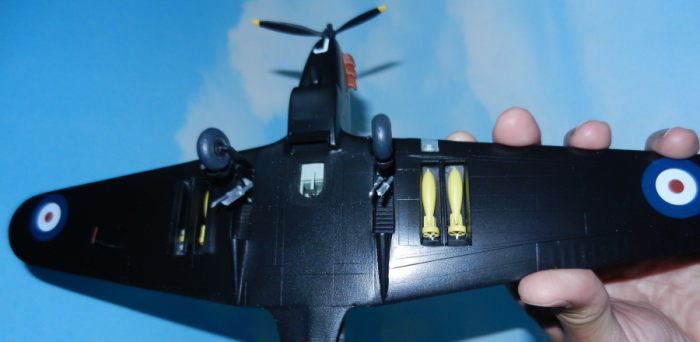 On January 12th
1940 Honor was promoted to Flying Officer. Bombing and air to air practice took
place in the few days that the weather permitted flight activities. “Ugly”
Barrat visited the squadron on the last day of the month.
On January 12th
1940 Honor was promoted to Flying Officer. Bombing and air to air practice took
place in the few days that the weather permitted flight activities. “Ugly”
Barrat visited the squadron on the last day of the month.
During March more cross country (day and night), low level attack and air to air (using a drogue) practices were carried out. One such exercise saw the use of Leica cameras thru the bomber window to record the results of the “attack”. On the 11th the Germans dropped pamphlets in French stating that the real enemy were the British and that fighting the Germans equaled to suicide. On March 18 first AASF Nickel raid by Fl Lt Madge who dropped pamphlets over Germany. The recco line during this mission was Manheim-Saarbrucken. On the 23rd and 25th more Nickel raids were sent to Germany (2 planes each time). With a U/S radio one of the planes had to be abandoned in the night (F/O Halliday) while the second one returned successfully (MacLachlan).
The first days of May were spent on more cross country and bombing practice. On May 10th the real war started. Records for this period (May-June) were destroyed on June 16th during the retreat and therefore they are sketchy and based on the recollection of the survivors. It is not know which missions were flown by Honor and crew. 88 Sqn was put on readiness at 4 am and their base at Baconnes was raided by the Luftwaffe just before 6 am. A successful JU88 dive bombing raid destroyed a hangar with 3 Battles and one Miles inside. Other stores were also destroyed but ammo and parachutes were saved from the fires. On the 11th after being bombed again early in the morning 3 planes took off for a raid. Ridell’s plane was damaged and had to force land with the other 2 Battles in his section being lost due to Flak (Skidmore and crew perished). In the evening the Germans successfully bombed the hangars again. On the 12th a section of 3 took off for an attack. Only one returned. No significant activity by the Germans against 88 Sqn took place during the rest of the day or the 13th. After being attacked again on the 14th the Battles of 88 Sqn departed to attack the enemy. While 4 planes attacked a bridge over the Meuse at Villars another 6 dive bombed a column of German tanks on a road near Sedan. Some planes suffered AAA damage and one was shot down (Sgt Ross and crew). Honor participated in the attack on the bridge and it seems that his DFC was awarded due to his actions this day. This squadron was one of the most successful ones on that tragic day that saw almost 50% losses of the Battles in France (out of 65 Battles sent on the missions on this day 35 failed to return – It is said that upon receiving the news of the massacre “Ugly” Barrat put a sign on his office door that read “Do not disturb”, closed it and wept alone). Baconnes was raided again that night and on the 15th. On this day the Battles switched their attacks to the night. An attack on a wood by 8 Battles was carried out. Results seemed disappointing (no major explosions on the ground) but all planes returned to base. After being heavily bombed on the 16th the Squadron left Baconnes for Les-Grandes-Chappelles. During the 3 days that it took to make the move no mission was carried out. Reinforcements in the form of pilots were received. On the 19th all available aircraft (number unknown) attacked ground targets during the early morning without loss. A maximum effort by all the available planes took place the following night (no losses experienced). Missions were carried out during the next couple of days including one on the 22nd on a column of German tanks in broad daylight when some hits being achieved. No losses recorded. On the 23rd during a night mission two planes were lost with one crew (Wickman’s) being KIA. All planes sent out on a night attack on the 24th returned safely. The next day one daylight and one night attack took place and during the last Anderson and his crew were lost. Little happened on the 26th and 27th except for a crash on take-off during the night with the crew getting injured. On the 29th one plane crashed and exploded during takeoff with the loss Evitt’s crew. The rest of the planes attacked their target but two more planes were lost (force landed). No missions were carried out on the 30th and on the last day of the month aircraft executed night bombing without a single loss. 88 Sqn flew 242 operational hours during May.
No missions were
flown during the first 4 days of June as the Squadron was falling back to Moisy.
Only on the 5th
the first mission of the month took place when 5 planes executed a night attack.
The same was repeated the following two days but on the 7th
the Germans found their base and bombed it two times. On the 8th
3 planes carried out a midday sortie to the Abbeville region with no loss. A mix
of daylight and night missions took place during the 9th
and 10th
with the loss of a single Battle.
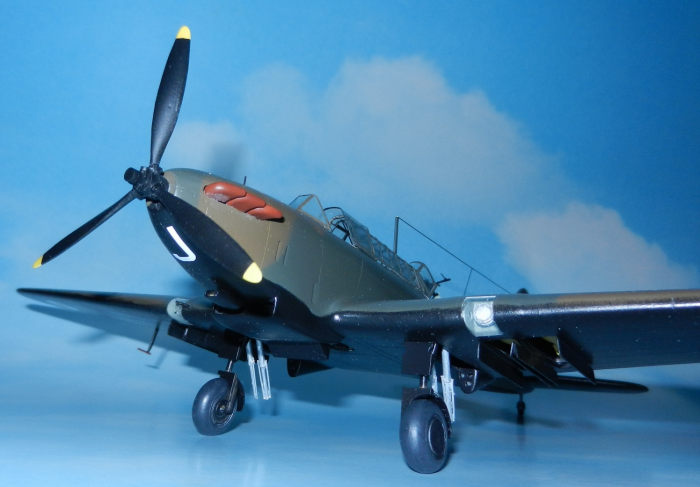 During a daylight mission on the 11th
one Battle was shot down with the loss of the entire crew (Gillam’s). During a
mission on the 12th
two planes were lost (Pitfield and crew KIA) during a successful daylight attack
that destroyed 3 pontoon bridges south of Chevrieres. Another daylight attack on
German tanks took place on the 13th.
The Battles flew under a formation of 27 Ju87s and then they were chased by
three Me109s. One Battle was shot down but the crew (Hayward) survived. The last
phase of their retreat happened when after executing a dawn attack in the
Evereux area the Battles landed at Houssay. On the 16th
the squadron left France when they departed from Brest. As there were less
planes than pilots these were crammed in the surviving Battles. Mac led 3 planes
to land at RAF Driffield. One of those was flown by Honor whose faithful mount
(K3949) was one of the planes left behind at Houssay. On the 23rd
they flew to Belfast to rest and start their new phase in the war: searches over
the sea around Northern Ireland.
During a daylight mission on the 11th
one Battle was shot down with the loss of the entire crew (Gillam’s). During a
mission on the 12th
two planes were lost (Pitfield and crew KIA) during a successful daylight attack
that destroyed 3 pontoon bridges south of Chevrieres. Another daylight attack on
German tanks took place on the 13th.
The Battles flew under a formation of 27 Ju87s and then they were chased by
three Me109s. One Battle was shot down but the crew (Hayward) survived. The last
phase of their retreat happened when after executing a dawn attack in the
Evereux area the Battles landed at Houssay. On the 16th
the squadron left France when they departed from Brest. As there were less
planes than pilots these were crammed in the surviving Battles. Mac led 3 planes
to land at RAF Driffield. One of those was flown by Honor whose faithful mount
(K3949) was one of the planes left behind at Houssay. On the 23rd
they flew to Belfast to rest and start their new phase in the war: searches over
the sea around Northern Ireland.
As far as I could find numbers show that out of the 19 pilots that flew to France in September 1939 only 8 made it back to the UK in June. Five were KIA, 1 POW, 2 injured and 3 were transferred to other units. Then out of the other 19 pilots received as reinforcements after September 1939 6 were KIA, 1 POW and 1 was transferred with 11 returning to the UK. This means that overall 50% of all the pilots made it back home with 29% killed and 5% POW (balance injured or transferred).
Five
of the pilots received the DFC (Halliday, Snell and Honor from A Flight,
MacLachan from B Flight and Pitfield who was KIA in June). DFMs were awarded to
LACs Davies (gunner in Mac’s crew), Sturdy and Corporal Briggs. As mentioned
above Graveley received the OBE (Military Division) for Gallantry for his
valiant actions trying to save his crew on Sept 20th.
A fighter pilot said that all the Battle pilots deserved a DFC just for taking
off on a combat mission.
| THE KIT |
For a preview of the kit visit this link. The difference between his kit and mine is that I have used the trainer version as the starting point. As such the canopy is completely different (two single ones), there are two cockpits with instrument panels, sits, walls and sticks in resin and decals are for trainer versions.
| CONSTRUCTION |
I had played with the idea of building a 88Sqn Battle for many years but as time went by the bomber version kits in the market started to dwindle, the asking prices started to sky rocket and when I finally decided I wanted to build Honor’s plane they were going for roughly US100 on eBay. On the other hand the target tug version is a better alternative option but also quite expensive. The final option was the trainer which, when I found that still had the fuselage spine for the bomber it became my “target”. I knew I was capable of scratch building the interior and I decided to heat-form the canopy by making a template and some Squadron clear styrene. I purchased the cheapest option on eBay (from New York) and then I posted the question for a spare bomber canopy on our IPMS London email. Maybe I could avoid the hard work to scratch build the greenhouse. Our MM friend Bret Green not only sent me two sets of canopies and landing lights for the bomber version (!) but also the instructions. He made my month (not just my day) and I am forever grateful because I don’t know how my own version of the greenhouse would have turned…
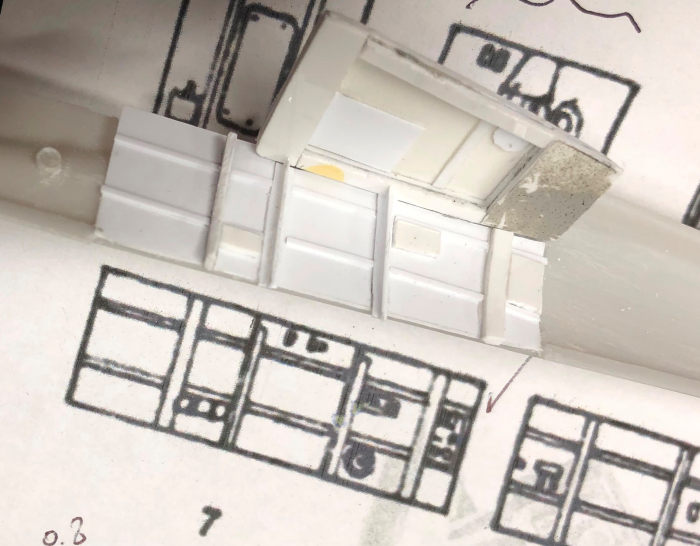 After consulting several reviews and builds on line I had a nice amount of
information. Some good pictures in Baughen’s book proved very valuable as well.
Not only I had a good challenge in the form of scratch building the rear cockpit
area but I also decided to spice it up by cutting out the bomb bays, put some
bombs and cut out the bombardier’s station window and add a bombing gunsight…why
make it easy when you can complicate your life?
After consulting several reviews and builds on line I had a nice amount of
information. Some good pictures in Baughen’s book proved very valuable as well.
Not only I had a good challenge in the form of scratch building the rear cockpit
area but I also decided to spice it up by cutting out the bomb bays, put some
bombs and cut out the bombardier’s station window and add a bombing gunsight…why
make it easy when you can complicate your life?
I started the project by building the rear cockpit section. Using pictures of the resin parts and the instructions of the bomber version I scratch built the floor using layers Evergreen. Like if it were the resin parts I had to do a lot of sanding to my floor and the fuselage walls for the two halves of the fuselage to close properly. Once I was happy with this and no pressure was needed to keep them together I started to work on the radio (making cubes with Evergreen) and the frames on the sidewalls (with thin strips of Evergreen). I previously removed several ejection pins from the internal walls of the fuselage.
Next was to work on the bombardier window. I made many holes using the hobby drill and then cut it open using an old cutter. The door of the radiator was cut out. Using the SAMI scale plans from Richard Caruana from the late 90s I re did the area with a new window for the bombardier. I glued it carefully and the small gaps here and there were eliminated with putty. Because opening the flap would leave a nice gap I had to scratch build the rear part of the radiator using a blade to represent the screen. The radiator door was recreated using thin Evergreen parts: two triangular for the sides and one rectangular for the door itself. The frame around the window was made using thicker strips of white plastic. Once the back part of the radiator face was glued in place I was able to move to the next challenge.
 The
drill came handy again to remove the bomb bay doors. Plastic was very thick so I
had to sand a lot to achieve a more realistic thickness. Using some pictures and
scale plans I made the bomb bay walls with thin Evergreen and drilling the holes
with a larger drill bit. This task was quite time consuming because the wings
would not close unless a lot of the new internal walls were sanded and curved to
match. Once they were properly shaped I glued them using Tamiya liquid cement.
Ribs on the upper half of the wing that are visible inside the bomb bays were
made with thin strips of Evergreen.
The
drill came handy again to remove the bomb bay doors. Plastic was very thick so I
had to sand a lot to achieve a more realistic thickness. Using some pictures and
scale plans I made the bomb bay walls with thin Evergreen and drilling the holes
with a larger drill bit. This task was quite time consuming because the wings
would not close unless a lot of the new internal walls were sanded and curved to
match. Once they were properly shaped I glued them using Tamiya liquid cement.
Ribs on the upper half of the wing that are visible inside the bomb bays were
made with thin strips of Evergreen.
Continuing with the wings I opened the holes to attach the landing lights. That was fairly easy. With the bomb bays ready and the opening for the lights the two wings halves were aligned and glued carefully. The landing lights were installed. I took two different approaches for their clear covers: on one wing I removed just a bit of plastic around the light and cut the clear part just small enough to fit in place. For the other wing I took a different and (for me new) approach: I cut out the clear part along the panel lines and then sanded the plastic in the wings to then slide in this much larger clear part. On both I had to use cyano to glue them and putty to merge them. Regretfully though better in terms of protecting the panels around the lights my approach with the larger clear part was not as successful as it did not deliver the same thickness as the rest of the wing…lesson learnt if I ever take this approach: sand more grey plastic/wing so the surface of the clear part is more flush with the rest of the wing.
 Back
to the fuselage now. The spine for the rear cockpit was improved by sanding out
the protuberance (it should be a hole) for the wire that goes to the tail and
then drilling a new one in the proper place (centered behind the gunner)) Then I
made 4 square windows on the forward part, made the doors for the rear machine
gun (by curving thin Evergeen sheets after cutting out these shapes), the roof
above the radio (under the doors) and the fuselage wall below the greenhouse
line. As the clear parts Bret had passed me were for the target tug they don’t
have the full depth that goes into the spine. So this missing part of the wall
was made using Evergreen and two squares of clear plastic for the forward window
on the fuselage sides. My work was not as good as it could have been and it is
evident on the finished model though during the construction it seemed to be
good enough…the union of these parts was covered with Putty.
Back
to the fuselage now. The spine for the rear cockpit was improved by sanding out
the protuberance (it should be a hole) for the wire that goes to the tail and
then drilling a new one in the proper place (centered behind the gunner)) Then I
made 4 square windows on the forward part, made the doors for the rear machine
gun (by curving thin Evergeen sheets after cutting out these shapes), the roof
above the radio (under the doors) and the fuselage wall below the greenhouse
line. As the clear parts Bret had passed me were for the target tug they don’t
have the full depth that goes into the spine. So this missing part of the wall
was made using Evergreen and two squares of clear plastic for the forward window
on the fuselage sides. My work was not as good as it could have been and it is
evident on the finished model though during the construction it seemed to be
good enough…the union of these parts was covered with Putty.
The parts of the cockpit and the rear section were sprayed using Vallejo RAF interior green. The forward cockpit is beautifully cast in resin and once all the parts were painted and highlighted it is a shame that somehow it will get “lost” inside the fuselage halves. One part that is not clear enough in the instructions is the “frame” on top of the cockpit itself. Using a very good picture of the Battles being assembled I was able to properly cut and place that piece (#24).
On the front of the opening for the bombardier I scratch built his instrument panel using 3 dial faces from some decals from the spares box. Once I dry fitted the fuselage halves with the pilot’s cockpit it I found that the bombardier panel was hitting the bottom of the rear resin part of the pilot’s floor. Looking to my references it was clear that that part is not as thick as the resin part. Of course CA is not to blame. It is a product of my “improvement” that forced me to then sand out very carefully that area in straight down way the excess of resin. After painting that area again now everything fit properly.
A piece of plastic on each fuselage half was used to create an internal backing plate for the later installation of the exhausts.
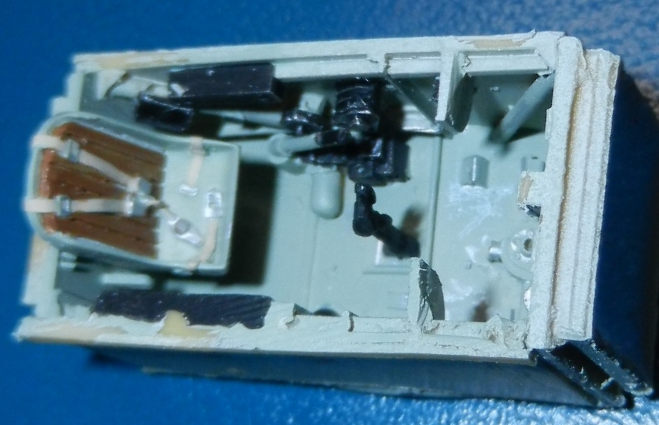 The
face of the radio was made using decals based on pictures of the actual radio
used in the Battle. All the little details on the walls were scratch built. I
had a spare white metal seat and ammo drums from other kits (I believe my
Hampden) and these were really handy for those details. The seat for the
gunner/radio operator was scratch built including the holes on the backrest. The
other thing that I had to modify was the floor in the rear cockpit as the one
supplied by CA (part #8) is not long enough and is rounded on both ends. In
reality the floor goes all the way towards the back of the pilot’s cockpit. Thus
using more than half of part #8 I extended the floor forward with more Evergeen.
This is important for my project as that floor is visible from underneath if you
peek thru the bombardier window. Towards the rear of the window for the
bombardier on the fuselage floor I glued the door using thin plastic.
The
face of the radio was made using decals based on pictures of the actual radio
used in the Battle. All the little details on the walls were scratch built. I
had a spare white metal seat and ammo drums from other kits (I believe my
Hampden) and these were really handy for those details. The seat for the
gunner/radio operator was scratch built including the holes on the backrest. The
other thing that I had to modify was the floor in the rear cockpit as the one
supplied by CA (part #8) is not long enough and is rounded on both ends. In
reality the floor goes all the way towards the back of the pilot’s cockpit. Thus
using more than half of part #8 I extended the floor forward with more Evergeen.
This is important for my project as that floor is visible from underneath if you
peek thru the bombardier window. Towards the rear of the window for the
bombardier on the fuselage floor I glued the door using thin plastic.
I removed the vertical tail plane because it should be off set.
Now yes! With all these things in place I glued the fuselage halves and left it to dry overnight with some tape keeping everything together. But of course there’s always something new. Not only had the floor to be extended…the fuselage frames go all the way forward as well and they are visible from underneath. So I had to add those extra pieces of framing on the forward area of the fuselage and paint them by hand.
Then attaching the spine came next. This one is wider than the fuselage halves so very careful sanding and some putty fixed the problem. I had to re scribe some panel lines…and add others missing in the CA kit.
I installed the tail offset but this left some gaps on the front right and back left union to the fuselage. These were covered with more strips of plastic and several sessions of putty and sanding eliminated this imperfection.
The wings were attached to the fuselage. There were issues with thickness of the bottom of the wings (thicker than the central part of the fuselage) and some gaps on the top. A lot of sanding to the bottom portion of the wing roots improved this part and some putty was required here and on the top.
The front face of the landing gear fairing had 3 holes drilled, attached to the fairing and this then was glued to the bottom of the wings. The main landing gear was attached.
I drilled some holes on the fuselage at the root of the horizontal tail planes, put some plastic rods thru them and these went into the gaps between top and bottom halves of the planes. This delivered a stronger union to the fuselage. The tip of the fuselage was sanded flat because I was going to add a clear piece of plastic for the formation light.
 Cutting
open the canopy and fine tuning the windshield was child’s game compared to
improving the greenhouse. And this was because after carefully deciding where
make the diagonal cut to open the gunner’s hood I “realized” the following day
while double checking my measurements that I had made a mistake the previous
night and that my cut should happen a couple of frames forward. So I did the cut
and then…Yikes!...I had been right the first time and the “correction” was
actually a mistake. In reality I had the 2nd
greenhouse that Kelly had sent me and could have used it but I did not want to
because I had wasted one due to my mistake and wanted to return him as many of
the parts he had lent me as I possibly could. Therefore with lots of patience I
had to make some of the missing frames (curved, straight…) I probably spent 2
nights fixing my mistake…
Cutting
open the canopy and fine tuning the windshield was child’s game compared to
improving the greenhouse. And this was because after carefully deciding where
make the diagonal cut to open the gunner’s hood I “realized” the following day
while double checking my measurements that I had made a mistake the previous
night and that my cut should happen a couple of frames forward. So I did the cut
and then…Yikes!...I had been right the first time and the “correction” was
actually a mistake. In reality I had the 2nd
greenhouse that Kelly had sent me and could have used it but I did not want to
because I had wasted one due to my mistake and wanted to return him as many of
the parts he had lent me as I possibly could. Therefore with lots of patience I
had to make some of the missing frames (curved, straight…) I probably spent 2
nights fixing my mistake…
I made new bomb bay doors and these were glued in place.
Needless to say during the construction copious amounts of putty were used for almost every single matching surface…
After a little bit more than 2 months of hard work the plane was ready for the paint sessions.
| COLORS & MARKINGS |
I used Vallejo light grey primer and found there were no big issues with my work with Putty. Nothing to be fixed (to be honest I was tired of working on my modifications. Maybe a bit of more putty on these areas could have masked the gaps better…but I had had enough).
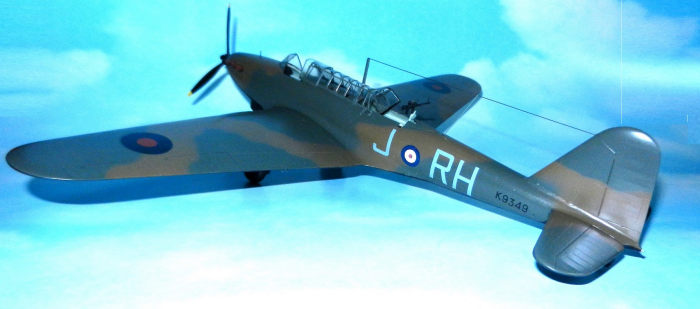 The
entire top surfaces (including the canopy and green house frames that had been
tediously masked) were painted with ModelMaster RAF Dark Brown. Using Richard
Caruana’s drawings I printed the cammo template and ModelMaster RAF Dark Green
was sprayed. Then
the lower surfaces and propellers were painted in Black. The
bombs (from the Trumpeter Wellington) were assembled and painted with a mix of
yellow and a bit of white.
The
entire top surfaces (including the canopy and green house frames that had been
tediously masked) were painted with ModelMaster RAF Dark Brown. Using Richard
Caruana’s drawings I printed the cammo template and ModelMaster RAF Dark Green
was sprayed. Then
the lower surfaces and propellers were painted in Black. The
bombs (from the Trumpeter Wellington) were assembled and painted with a mix of
yellow and a bit of white.
Moveable surfaces were highlighted with a thin black pencil. Some exhaust marks were added with dry pastels sanded and applied with a Q tip. Now I was ready for a careful and gentle couple of passes with Future to then add the decals.
Because the decals in the kit were old and cracked I wasn’t able to use them. So I had to resort to all my spares to find the proper top and bottom wing diameters. It was really a challenge because of the dimensions of the ones on the top of the wings that are very particular. The others were much easier and I used the Xtradecal sheet for RAF Grey codes, Carpena for the serial numbers and the white J for the nose from another RAF white codes sheet. Roundels for the fuselage (RAF early style) came from I believe a Hurricane decals sheet. A good coat of Vallejo Semi-Gloss varnish sealed the decals and then I could start working on the
| FINAL CONSTRUCTION |
Navigation lights were painted using MM Acryl clear red and green over a base of aluminum. The bombs were glued inside their bays using a piece of plastic on top of them to keep them stable while the glue was drying. The landing gear was completed with some scratch built parts per directions and references. The wheels were added with the tires painted in dark grey. The scratch built bombsight was glued thru the bombardier’s window. The pitot installed.
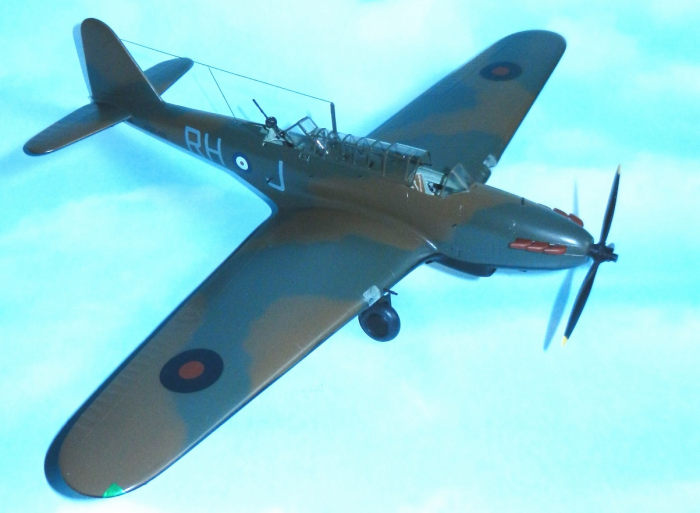 Moving to the top of the plane the windshield was added after a photoetched ring
for the gunsight was added on top of the instrument panel. The greenhouse came
next. The supporting arms had to be cut and added which was a tricky task. Then
the greenhouse was glued in place. Some pressure had to be made to obtain the
right width and height. The
radio mast was added. Machine gun (from the Hampden also) with the support made
based on pictures was glued in place. Then the canopy for the gunner was
installed in the open position.
Moving to the top of the plane the windshield was added after a photoetched ring
for the gunsight was added on top of the instrument panel. The greenhouse came
next. The supporting arms had to be cut and added which was a tricky task. Then
the greenhouse was glued in place. Some pressure had to be made to obtain the
right width and height. The
radio mast was added. Machine gun (from the Hampden also) with the support made
based on pictures was glued in place. Then the canopy for the gunner was
installed in the open position.
Some “handles” on the right side of the fuselage were made and added in place. The antenna wires were made using stainless steel wire. One came thru the drilled hole coming from the radio and this one was linked with the one going from the mast to the tail.
Finally the bead part of the gunsight was added in front of the windshield, the really tight fit exhausts glued in place, the navigation light on the tail attached; the .303 machine gun for the pilot (taken from the CA gun pack for their Blenheim fighter). The propeller finished the project.
| CONCLUSIONS |
It was a self-inflicted project but worth every moment. If the hobby does not have challenges then it’s too easy…I really like the CA kit. I hope the dedication I put on the model is a suitable tribute to Dudley Honor and his friends that were sacrificed in their planes trying to stop the Blitzkrieg.
With special thanks to:
Kelly Breen, Dennis Newton and Richard Bungey
31 May 2021
Copyright ModelingMadness.com. All rights reserved. No reproduction without express permission.
If you would like your product reviewed fairly and fairly quickly, please contact the editor or see other details in the Note to Contributors.